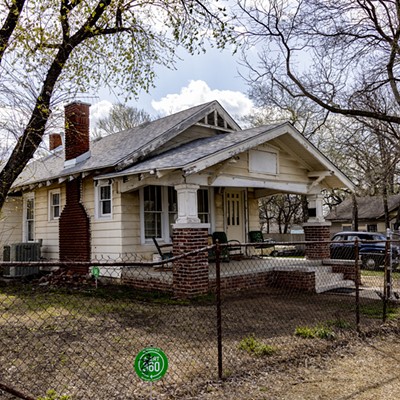The stealthy moves of Jackie Chan left a mark on Chris Stevenson.
The Oklahoma City resident, taken by the kung fu guru's cinematic skills, soon became a Chan aficionado and martial-arts master.
It was through his love for the art that he came across parkour, a sport with similar stylings, but very different results. It is universally known as the physical discipline of training to overcome any obstacle within one's path by adapting movements to the environment.
Largely credited with establishing the modern practice of parkour around 1988, Frenchman David Belle adapted the "natural method" to suit his own needs. Georges Hébert, a former navel officer from France, first developed this method after a stint in Africa prior to World War I, having noticed the indigenous people's inherent athleticism and oneness with their surroundings.
After coming across Belle's and Hébert's ideas, Stevenson abandoned his kung fu background to focus on leading the Oklahoma Parkour Association (OKPK). He founded the group along with friends Cody Green and Jordan Nelson.
"Several of us noticed that there was no substantial influence of parkour in the metro area or even in the state," Stevenson said. "We wanted to create a group that could teach others about the sport."
For those ignorant of traceurs' (the term for parkour practitioners) intentions, these people may look like a bunch of daredevil delinquents scaling walls and jumping railings.
Although certainly a common reaction, this is just the attitude that OKPK hopes to eliminate.
"People think we're just skaters without boards. They think we're up to no good, that we're just goofing off and messing around. In reality, the principles of parkour fall in the exact opposite category," Stevenson said.
The sport is completely centered around discipline — discipline of the body, of the mind and of being aware of one's surroundings.
Part of OKPK's doctrine is that traceurs ought to "value community, humility, positive collaboration, sharing of knowledge and the importance of play in human life, while demonstrating respect for all people, places and spaces."
Stevenson stressed the intense physical demands that accompany the sport. About 20 percent is parkour, he noted, while the rest is comprised of training.
"A few of us have three to five regular training days throughout the week, but every Tuesday, Thursday and Saturday, we also do tons of weight training and power lifting," he said. "It's all about self-improvement. I just let my mind wander, find obstacles and work my way through it."
OKPK also meets for "jams," or parkour practice sessions, at 11 a.m. Saturdays in lower Bricktown. These sessions are open to any member of the public, regardless of age, sex or ability.
Luke Winslow, a frequent jammer, enjoys practicing on his own, but also appreciates the support and advice from more experienced traceurs.
"The great thing about parkour is that you can do it just about anywhere, anytime," the Edmond North senior said. "I'm certainly not as good as people in college or older who have the time to train a few hours every day, but I do what I can. The sport is all about knowing your limits."
In addition to bettering the image of the craft and training eager followers, OKPK aims to reach out into the community via various projects throughout the metro area.
One of these, called Community Benefit Programs, allows traceurs to improve the very architecture that they climb and scale by doing such simple tasks as repairing railings and picking up litter.
As it notes on its website, the organization hopes to continue to expand these productive efforts.
"OKPK is working on a couple of long-term projects that we are very excited about," founder Nelson said. "While we can reveal few details right now, you can be certain that these projects will go to amazing lengths to spread the positive benefits of parkour to people of all ages across the state." —Emily Hopkins








